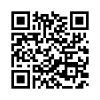Guidelines for Authors
1. The manuscript is written in English, has never been published, or is being published in another journal or publication, and be free of plagiarism.
2. The manuscript may be research-based, case-study-based, or literary-based.
3. The author must register and complete the form in Diksi Online Journal System (OJS) via https://journal.uny.ac.id/index.php/diksi/user/register
4. Following the peer reviews process, the manuscript will be published in Diksi.
5. The manuscript should be formatted by the author standards and template provided on Diksi's website.
The manuscripts' structure:
1. Title. The title should be succinct, vivid, and informative, with a maximum of 13 words. It must be precise concerning the topics discussed. There is no unusual abbreviation in the article title. The essential concepts should be written first, followed by their explanations.
2. The authors' identities and affiliations. The authors' names should be followed by their institutions' names, addresses, and email addresses, omitting academic and job titles.
3. Abstract. The abstract is written in English, one paragraph about 150-200 words in length, and contains the following information: background, objective, research methods, findings, conclusions, followed by keywords (3-5 words or phrases) are written below the abstract, type in bold, and italic.
4. Introduction. The introduction should include (briefly and consecutively) a general context and a review of the previous research and literature (state of the art), as well as the primary research problems and approach. The final section of the introduction should clarify the aim of the article authoring.
5. Method. This section should include sufficient details about the method used in the research. Detailed information about the method should be stated in clear explication. How the research is conducted, in which methods, and how the data is collected and analyzed. If using the experiment, simulation, statistical test, or analysis are used to create the results to enable another researcher to replicate the procedure.
6. Results and Discussion. This section contains the research findings and their discussion. The research findings must be backed up by sufficient evidence. The research findings and discovery must be the responses to, or refutation of, the research hypothesis given in the opening section. The following components of the discussion should be addressed: How (what/how) do your findings connect to the original topic or objectives stated in the Introduction section? Do you provide a scientific interpretation for each of your conclusions or findings (and why)? Are your findings compatible with those of other investigators (what else)? Or are there distinctions?
7. Conclusion. The concluding statement should not simply restate the findings, discussions, or abstract. Conclusion contains substantialization of meaning. It can present a statement of what is being expected as proposed in the “Introduction” and what has happened as reported in the “Results and Discussion” so that there is compatibility. Additionally, you should recommend future studies and highlight those that are currently underway.
8. References. The References section comprises only the sources cited or included in the body of the article. If feasible, please use Reference Manager Applications. Referral sources should account for at least 80% of journal articles, and 20% may come from other resources. References are formatted in the APA style, 7th edition, for more information, please consult https://apastyle.apa.org/

2.png)














